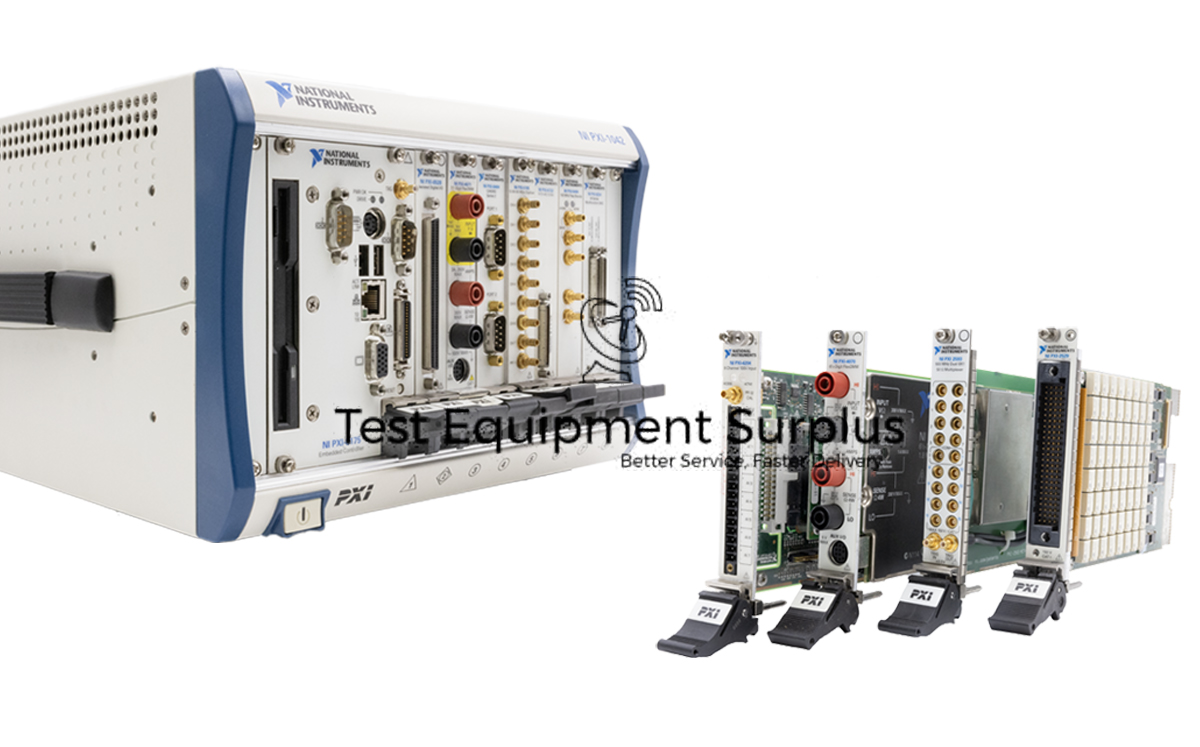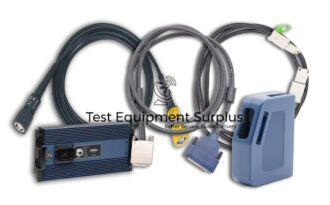Description
The National Instruments PXI-1408 is a sophisticated IMAQ device that supports versatile input sources through a BNC connector or a 25-pin DSUB port, offering two input modes: Referenced Single-Ended (RSE) and Differential (DIFF). When using the BNC connector for video input, the device must be configured in RSE mode, specifically with W1 populated. Alternatively, the 25-pin DSUB port allows for either RSE or DIFF configurations, adapting to the requirements of different applications.
The device boasts an 8-bit flash Analog-to-Digital Converter (ADC) that accurately converts analog video signals into digital data. It is equipped with four video signal multiplexers that manage multiple video sources, coupled with programmable gain and displacement features which enhance the device’s flexibility in varied imaging scenarios.
With a PXI interface, the PXI-1408 ensures high-speed data transfers, essential for image acquisition tasks. The device also includes sophisticated DMA distribution controls that efficiently manage data transfer between FIFO buffers and the PCI bus, ensuring seamless data flow and reduced latency.
In terms of memory, the PXI-1408 is furnished with both non-volatile and Static RAM, which are crucial for maintaining device settings and programming DMA controllers. The device’s triggering capabilities are robust, featuring multiple external triggers and RTSI bus triggers, providing users with the flexibility to synchronize acquisition with external events.
Moreover, the PXI-1408 supports a range of synchronization and clock signals, including CSYNC, HSYNC, VSYNC, and PCLK, which can be either internally generated or sourced externally, ensuring compatibility with a wide array of video sources and synchronization requirements.
| Feature | Specification |
|---|---|
| Part Number | PXI-1408 |
| Manufacturer | National Instruments |
| Input Sources | BNC connector, 25-pin DSUB port |
| Input Modes | Referenced Single-Ended (RSE), Differential (DIFF) |
| Video Input Configuration for BNC | RSE (W1 populated) |
| Video Input Configuration for DSUB | RSE or DIFF |
| Analog-to-Digital Converter (ADC) | 8-bit flash ADC |
| Video Signal Multiplexers | Four |
| Programmable Features | Gain, Displacement |
| Interface | PXI |
| DMA Distribution Controls | Controls data transfer between FIFO buffers and PCI bus |
| Memory Type | Non-volatile and Static RAM |
| Triggering | External triggers, RTSI bus triggers |
| Synchronization and Clock Signals | CSYNC, HSYNC, VSYNC, PCLK (internally generated or externally) |
Question 1: What type of input modes does the National Instruments PXI-1408 support when using the 25-pin DSUB port, and how does this differ from the configuration required when using the BNC connector for video input?
Answer 1: The non-volatile and Static RAM in the National Instruments PXI-1408 facilitate the retention of device settings and the programming of DMA controllers, ensuring that configurations are preserved and that data transfers are efficiently managed even after the device is powered down and restarted.
Question 2: What type of input connector must be used on the National Instruments PXI-1408 when configuring the device in Referenced Single-Ended mode, and what configuration is specific to this connection?
Answer 2: When configuring the National Instruments PXI-1408 in Referenced Single-Ended (RSE) mode, a BNC connector must be used, and specifically, the device should be configured with W1 populated for this connection.
Question 3: What kind of device settings and programming control is facilitated by the non-volatile and Static RAM in the National Instruments PXI-1408?
Answer 3: The National Instruments PXI-1408 can be configured to Referenced Single-Ended (RSE) mode when using the BNC connector, which requires W1 to be populated, and it offers both RSE and Differential (DIFF) modes for the 25-pin DSUB port, allowing the device to adapt to various application requirements by providing flexibility in connecting and configuring different types of video inputs.
Question 4: What input modes are supported by the National Instruments PXI-1408 when using its 25-pin DSUB port, and how does this flexibility benefit different applications?
Answer 4: The National Instruments PXI-1408 supports both Referenced Single-Ended (RSE) and Differential (DIFF) input modes when using the 25-pin DSUB port, whereas when using the BNC connector for video input, the device must be configured exclusively in RSE mode with W1 populated.
Question 5: What are the video input modes the National Instruments PXI-1408 can be configured to via the BNC connector and the 25-pin DSUB port, and how do they adapt to different application requirements?
Answer 5: The National Instruments PXI-1408 supports both Referenced Single-Ended (RSE) and Differential (DIFF) input modes when using its 25-pin DSUB port, allowing it to adapt to various application requirements by accommodating different signal types and reducing noise for more accurate measurements.



